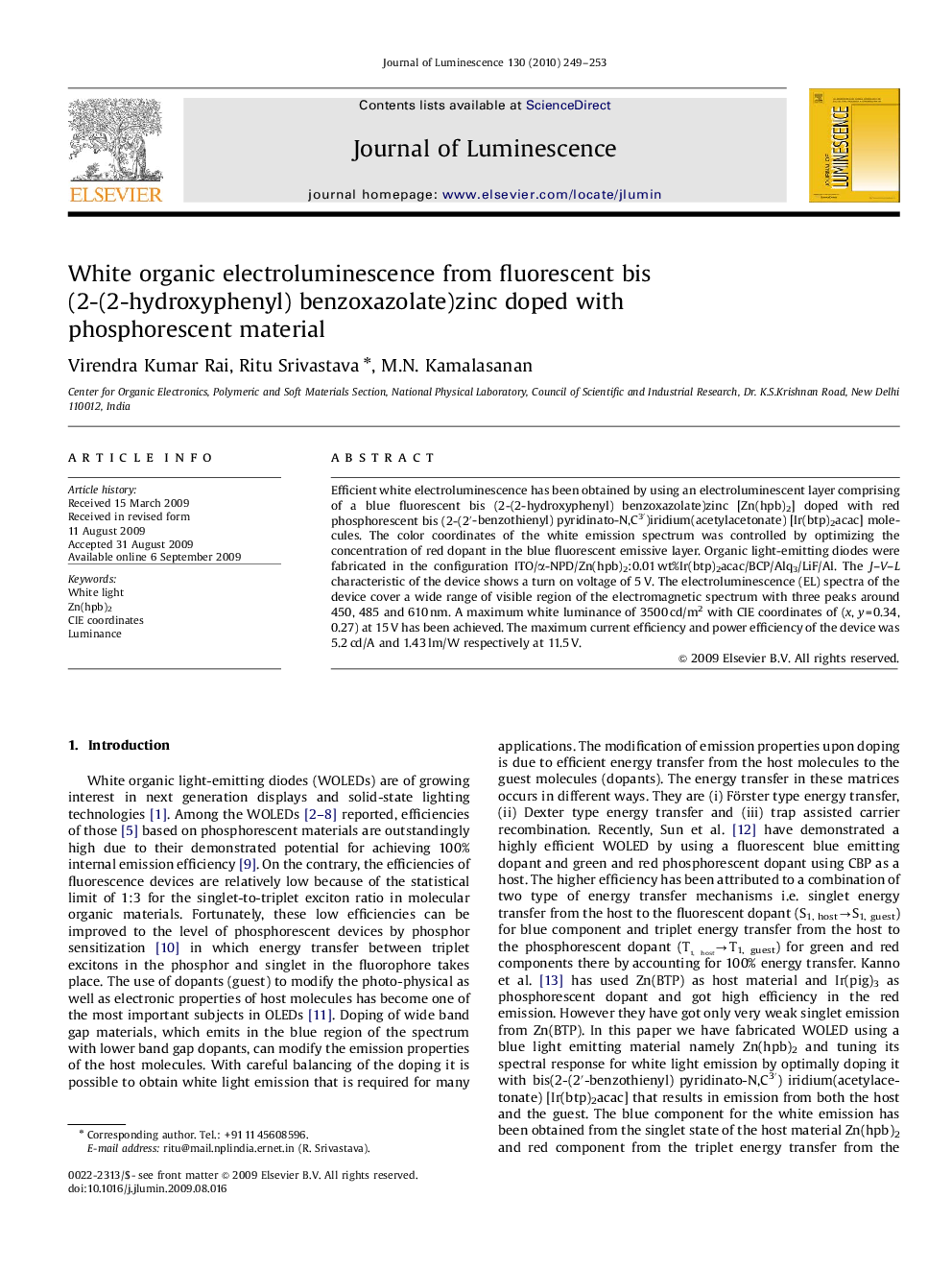| Article ID | Journal | Published Year | Pages | File Type |
|---|---|---|---|---|
| 5402734 | Journal of Luminescence | 2010 | 5 Pages |
Abstract
Efficient white electroluminescence has been obtained by using an electroluminescent layer comprising of a blue fluorescent bis (2-(2-hydroxyphenyl) benzoxazolate)zinc [Zn(hpb)2] doped with red phosphorescent bis (2-(2â²-benzothienyl) pyridinato-N,C3â²)iridium(acetylacetonate) [Ir(btp)2acac] molecules. The color coordinates of the white emission spectrum was controlled by optimizing the concentration of red dopant in the blue fluorescent emissive layer. Organic light-emitting diodes were fabricated in the configuration ITO/α-NPD/Zn(hpb)2:0.01 wt%Ir(btp)2acac/BCP/Alq3/LiF/Al. The J-V-L characteristic of the device shows a turn on voltage of 5 V. The electroluminescence (EL) spectra of the device cover a wide range of visible region of the electromagnetic spectrum with three peaks around 450, 485 and 610 nm. A maximum white luminance of 3500 cd/m2 with CIE coordinates of (x, y=0.34, 0.27) at 15 V has been achieved. The maximum current efficiency and power efficiency of the device was 5.2 cd/A and 1.43 lm/W respectively at 11.5 V.
Keywords
Related Topics
Physical Sciences and Engineering
Chemistry
Physical and Theoretical Chemistry
Authors
Virendra Kumar Rai, Ritu Srivastava, M.N. Kamalasanan,
